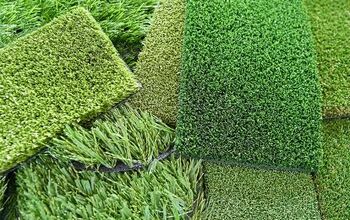Can Termites Eat Through Concrete? (Find Out Now!)

Termites are devastating little pests, known for their ability to completely destroy homes by chewing through wooden walls and other structures. However, some people claim that termites can also chew through concrete foundations, but fortunately, this is a myth.
Termites cannot eat through concrete. Concrete often cracks as it settles, regardless of how it is poured, but this is not a sign of termite infestation. The termites will then use the channels created by the cracking to help them enter into the wooden structures of your home. These wooden structures will serve as their food source, not the concrete.
So why is there a conception that termites eat through concrete, and do termites pose any sort of threat to concrete structures at all? Here’s what you need to know.
Do You Need Pest Control Services?
Get free, zero-commitment quotes from pro contractors near you.

Do Termites Damage Concrete?
The good news about concrete is that it is far too durable for termites to chew through.
Often, homeowners believe that they have concrete-gnawing bugs in their homes because they’ve detected termite activity in the middle of the house, far away from the wooden exterior walls.
Though these fears are valid, the reality is that termites don’t eat through concrete. Instead, they squeeze through very small, sometimes undetectable cracks in the foundation. These are cracks that just about every foundation will develop over time, no matter how skillfully it is poured.
While they cannot harm concrete walls or foundations, they can harm nearby structures made out of wood. Therefore, it’s important not to ignore a termite infestation.
How Do Termites Get Inside?
The concrete foundations of large, newer homes are often poured in sections to allow room for the concrete to expand and contract without breaking. However, for houses that are smaller or older, termite infestations are more common simply because cracks are more prevalent in the concrete.
Once they get through the foundation, termites will climb under wallpaper, carpets, and other areas to get to the wood they want. They will even travel across open or exposed areas by building mud tubes to get from point A to point B.
When concrete is poured around plumbing, it often shrinks or retracts around the pipe, and in slab construction, there is often something known as a “bath trap.” A bath trap is just a square of dirt beneath a bathtub, which of course is another common entry point for termites.
Of course, the foundation isn’t the only point of entry for termites, either. They can also come into holes meant to allow pipes or other utilities into the home. It just takes one tiny gap for termites to get inside.
Signs of Termite in Concrete
Getting rid of a termite infestation can be challenging unless you know exactly what to look for and are able to address the problem early on.
The most obvious sign of a termite infestation is the detection of mud tunnels, or mud tubes, which are usually found inside crawl spaces, along walls, or in insulation. These are about half to one inch long and look like small clumps of dried mud.
You can also look for their tunnels in wooden structures, which are formed after the termites have eaten the softwood and left hardwood behind.
Of course, finding dead insects is a surefire sign that you have a problem too. Look for dead swarmers along with wings. These are often left on ledges, as the termites shed their wings regularly.
Over time, and with prolonged infestations, you may notice more serious signs of termite action. It may seem as though your foundation is sinking or that your walls are spongy. This is an urgent sign that it’s time to call in a pest control professional!
How Do You Treat Termites in Concrete?
Again, even though termites don’t eat concrete, they can cause significant damage to wooden structural supports (particularly those with direct ground contact), floor joists, basement window frames near the ground, porches, and other structures.
While you won’t be treating problems that are specific to the concrete, a good way to get rid of termites in concrete is to apply a termite treatment under your bottom concrete slab.
By applying a liquid pesticide here, it will prevent the termites from passing underneath the slab and going up into your house to consume cellulose. This is one of the most common entry points for subterranean termites, so this sort of chemical treatment tends to be effective.
As you can imagine, this work is quite technical and tricky to do, so you may be best off hiring a professional pest control service to take care of the work for you.
Related Questions
Can termites eat through drywall?
Termites can eat through drywall. Because drywall is partially made of cellulose, it is an ideal food source for termites.
Can termites eat through stucco?
Termite problems are just as common in stucco homes as they are in any other. The biggest problem with a stucco home is that the exterior finish often extends beneath the surface of the soil, creating the ideal entry point for termites to get into the home.
What insect drills through concrete?
Although people often assume that termites, carpenter ants, and other tunneling pests eat concrete, that’s not the case. There is only one type of insect that is able to get through hard structures like concrete and that is the mortar bee.These pests, also known as mason bees, drill holes in brick masonry to build their breeding nests.
Do You Need Pest Control Services?
Get free, zero-commitment quotes from pro contractors near you.

How to Get Rid of Termites in Concrete Wall
Unless there are cracks in your concrete wall that are harboring termites, they probably won’t hang out here for very long. Concrete usually just serves as a transit route and not necessarily a nesting site for termites, since there isn’t any food here.
However, you can get rid of termites in a concrete wall by limiting moisture and fixing any leaks. You can also use Borate, a popular termite repellant, on your concrete. This has a strong scent that will help repel termites for a long period of time.
Ultimately, getting rid of termites in concrete has more to do with preventing them from spreading to wooden structures in your home than anything else. Conduct regular termite inspections to keep them out for good!

More by Rebekah Pierce















![Standard Dining Room Table Dimensions [for 4, 6, 8, 10 and 12 People]](https://cdn-fastly.upgradedhome.com/media/2023/07/31/9074335/standard-dining-room-table-dimensions-for-4-6-8-10-and-12-people.jpg?size=350x220)











